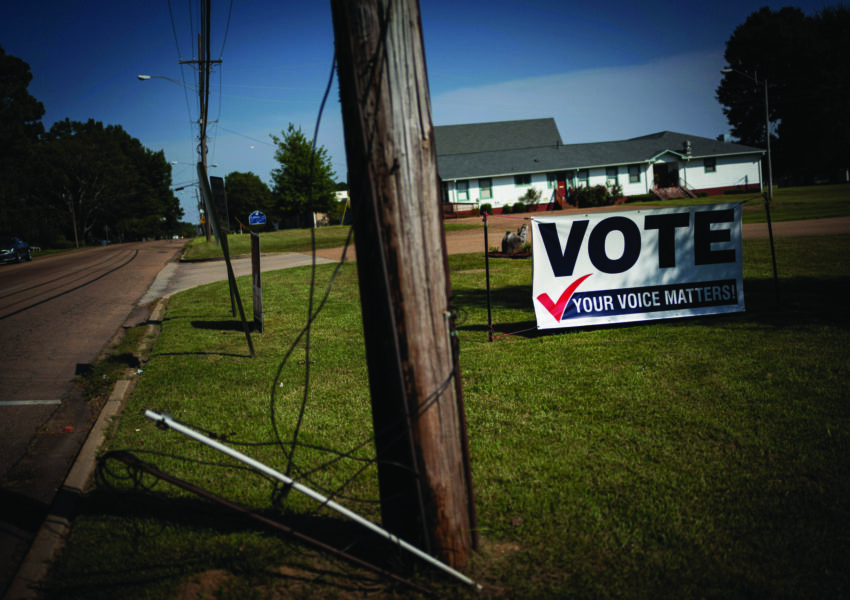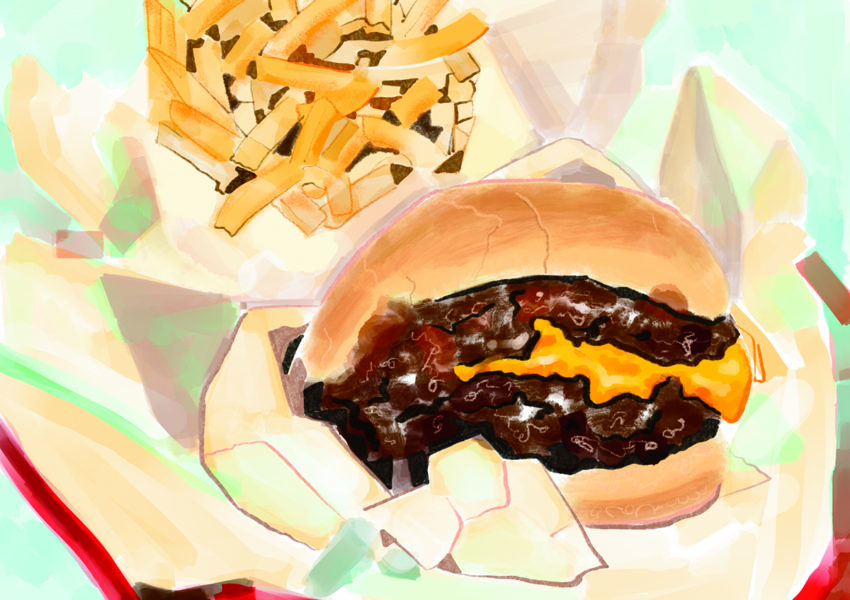The Greenwood Food Blockade The White Citizens’ Council, SNCC, and the politics of food access
By Bobby J. Smith II
Throughout the Mississippi civil rights movement, the relationship between race, segregation, and the politics of food shaped the social, political, economic, and nutritional realities of blacks, especially for those who participated in activism in the Mississippi Delta. With the decline of the cotton industry and limited access to nutritious food as a backdrop, the era created fertile soil for proponents and opponents of civil rights.
![]()
For proponents, it showed the world the plight of rural Mississippi blacks and helped garner support. For opponents like the White Citizens’ Council (WCC), these elements perpetuated the dual organization of the South, which enforced white superiority and promoted black inferiority. This dichotomy is best illustrated by the sharecropping system in the Delta, where the WCC and their supporters weaponized food and food policies, forcing starvation on black citizens in a concerted effort to maintain a racist political and social structure. When most people hear of the WCC, it is related to how they developed whites-only schools and segregationist media programs in response to the May 1954 Brown v. Board of Education decision. But the WCC was crueler still. Through local and state-sanctioned efforts, the WCC used food as a weapon to maintain white authority, disrupt black food access, and impede civil rights activism.

After Black Monday
The WCC first organized in response to the Supreme Court ruling on Brown v. Board. US Representative John Bell Williams of Mississippi called the decision “Black Monday.” In July, Robert “Tut” Patterson, manager of the St. Rest plantation, organized the WCC’s first meeting in Indianola, the county seat of Sunflower County. The Council recruited white business leaders, community members, farmers, and elected officials to employ tactics developed by Mississippi circuit judge Thomas Pickens Brady. In his speech- turned-manifesto, Brady provided the theoretical underpinnings of the Council.
He wrote about a forthcoming “cold war” defined by an economic boycott against blacks seeking political power. Brady advocated for systems that would leave Mississippi blacks destitute and dependent. Black sharecroppers known to be associated with groups like the NAACP were fired from plantations or were denied access to credit.
When white businesses depended on black patronage, this approach did not always work. After fighting in World War II, Medgar Wiley Evers and his brother Charles Evers returned to their hometown of Decatur, Mississippi, some seventy miles east of Jackson. The Evers brothers observed that blacks did not have access to many jobs outside of the sharecropping system. Medgar noticed that a downtown grocery store had no black employees, but the clientele was predominantly black. When blacks were in line and a white person approached, they had to cede their place. With political insight influenced by their military service, Medgar and Charles organized a boycott to force the store to establish jobs for black people. The owner acquiesced only after he lost business due to the boycott. Community-driven organizing set the stage for larger-scale activism that drew the ire of business- and land-owning whites across the state.
More than a truckpatch

In the early 1950s, most rural blacks in the Delta lived on cotton plantations. They grew their own food on a small piece of land called a truckpatch. Black sharecroppers in this remote area had no options to procure food outside of the plantation system. Plantation commissaries and a few regional grocery stores provided blacks food during the cotton season, and the Federal Commodities Food Program supplied cheap and highly processed provisions in the winter. These provisions included canned beans and meats, flour, cheese, sugar, milk, and sometimes butter. The truckpatch, usually located next to a plantation shack, offered sharecroppers a degree of autonomy. They could grow their own beans and greens and raise hogs and chickens.
The Federal Commodities Food Program was administered by the county board of supervisors, who were either proud members of the WCC or forced to adhere to the Council’s political control. If any black sharecropper was found to have participated in civil rights activism or signed desegregation petitions, they were at risk of being fired and immediately displaced from their homes. The sharecropping system inextricably linked economic and food security, and plantation owners like Patterson had the power.
The Blockade begins

By the fall of 1962, the cotton industry relied more on machines to harvest than on black sharecroppers. As a result, many sharecroppers were forced off the land and migrated to cities like Greenwood, the seat of Leflore County. In the early 1960s, Leflore County had a population of about 50,000, over two-thirds of which was black. Whites held one hundred percent of political offices and owned about ninety percent of land in the county. Greenwood was home to both the WCC headquarters and a Student Nonviolent Coordinating Committee (SNCC) field office. Medgar Evers was a Mississippi-based field secretary with the NAACP who mentored groups like SNCC. The SNCC office was located just blocks from WCC headquarters in downtown Greenwood. The office welcomed a stream of activists from all over the United States, including comedian Dick Gregory. This support angered the WCC and Greenwood’s white political establishment.
In November 1962, the all-white Leflore County Board of Supervisors met to discuss the county’s participation in the Federal Surplus Food Commodity Program, administered by the State Department of Public Welfare. The meeting was open to all white citizens; however, SNCC activist Sam Block noted that less than one percent of those impacted by the program were white. At this meeting, J.H. Peebles, president of the Greenwood Bank of Commerce, motioned to discontinue the federal food program. Forty of those in attendance voted in favor, and twenty-nine against. This vote marked the beginning of what some activists call the Greenwood Food Blockade.
During the Blockade, more than 20,000 sharecroppers and farmworkers were without a reliable food source. In a report from nearby Ruleville, SNCC’s Sunflower County headquarters, organizers Charles Cobb and Charles McLaurin noted that the federal program was “the only way Negroes make it from cotton season to cotton season.” They wrote, “If this is taken away, they have nothing at all.” The Blockade exacerbated widespread poverty-induced hunger and malnutrition among Delta sharecroppers and farmworkers. This dramatically shifted the movement’s focus from civil rights to food access for one year, underscoring the link between political power and the ability to eat.
SNCC saw this move by the board of supervisors as retribution for their Delta efforts. In response, they organized a national food drive and developed a free food distribution program in areas affected by the Blockade. Donations of food arrived by mail and freight from activists across the United States. This was the first time SNCC engaged in the politics of food beyond restaurant sit-ins.

Fighting starvation
Mississippi public welfare commissioner and WCC affiliate Fred A. Ross released a public statement in early 1963, condemning SNCC’s free food distribution program. “Dick Gregory, Martin Luther King, the Congress of Racial Equality, the Student Non-Violent Coordinating Committee, and similar racial agitation promoters are rendering a disservice to the Negro Population in Mississippi,” Ross stated. “The cheap publicity generated by Gregory, and the gullibility of national news media who apparently relish the opportunity to disseminate half-truths and outright lies, may result in the surplus food commodity program in Mississippi being seriously curtailed or wiped out entirely.”
That winter was particularly bitter, historian Charles Payne noted. Black sharecroppers earned less than usual, even though the harvest was better than usual. Organizers Sam Block and Willie Peacock, chair of the Greenwood food relief committee, wrote to the Atlanta SNCC office describing the winter conditions of blacks and the need for food: “These people here are in very, very bad need for food and clothes…the house they are living in has no paper or nothing on the walls and you can look at the ground through the floor.” Poor living conditions also created poor food conditions for blacks. Bob Moses, Mississippi SNCC director, wrote to Martha Prescod, a student at the University of Michigan, on the conditions: “We do need actual food.” Moses vividly described to Prescod how after finishing a bowl of stew, a “silent hand” of a sharecropper reached to eat a leftover potato.

After months of struggling and running the food drive, SNCC petitioned President John F. Kennedy and USDA Secretary of Agriculture Orville L. Freeman to intervene. During spring 1963, SNCC testified before the House Judiciary Committee citing the denial of food via the federal food program, recommending that the government intervene on behalf of the starving sharecroppers. In response to their testimony and efforts, “the Justice department opened an investigation, and as a result, county officials were warned that unless they resumed food distribution, the Department of Agriculture would take over and continue the program.” An internal SNCC newsletter reported on March 22 that the Leflore County Board of Supervisors voted to reinstate the program due to pressure from the agriculture department.
Nonetheless, the food drives continued throughout the Delta after the commodity program was reinstituted. The white power structure still attempted to dismantle the commodity food program and disrupt SNCC food drives. Eventually, the segregationists changed strategies. Instead of disrupting black food access locally, they focused on the national food stamp program.
After the Blockade

Reinstating the commodities program marked the end of the Greenwood Food Blockade. The white power structure had to cede to the demands of SNCC. The next power play came in response to the “War on Poverty.” This program never made a lasting impact on the Delta, due to the workings of Mississippi politicians Jamie Whitten, John Stennis, and James O. Eastland. Throughout the rest of the 1960s, these men fought to ensure that the dual organization of the South was maintained. They fought for the food stamp program, which many civil rights activists opposed. Most poor blacks in the Delta did not qualify for, or could not afford to purchase food stamps. Any county that implemented the program had to withdraw from the commodities food program under federal law.

Rather than go hungry, poor blacks would have to apply for a loan from the government to purchase stamps or establish credit with local white grocers. This dynamic increased black dependence on the white grocers and plantation owners. Historian Mark Newman noted, “Some grocery stores only accepted food stamps for the most expensive brands of food and…raised prices when the county entered the food stamp program.” As a result, poverty among African Americans in the Delta was exacerbated.

The Greenwood Food Blockade illustrates a critical moment where the white power structure used food as a weapon to oppose the advancement of black civil rights. Many places in the Delta have yet to recover from the social, political, and economic struggle for equality. Delta counties today suffer high rates of food insecurity, poverty, and hunger, just as they did over fifty years ago. Manipulation of food policies at the local, state, and national levels had lasting effects. This manipulation has led to food deserts and to high rates of diet-related illnesses, including diabetes.
This article focused on how food was used as a weapon against the movement, but food was also a tool of resistance by activists. Fannie Lou Hamer turned to the politics of food in the late 1960s with the creation of Freedom Farms. Revisiting the Greenwood Food Blockade and other civil rights movement struggles provides a historical foundation for activists working in food justice today.
Bobby J. Smith II, a PhD candidate in development sociology at Cornell University, is the 2017 Medgar and Myrlie Evers Research Scholar at the Mississippi Department of Archives and History. His research was supported in part by the MDAH and the Medgar and Myrlie Evers Institute. He delivered a version of this paper at the SFA’s 2017 graduate student conference.




